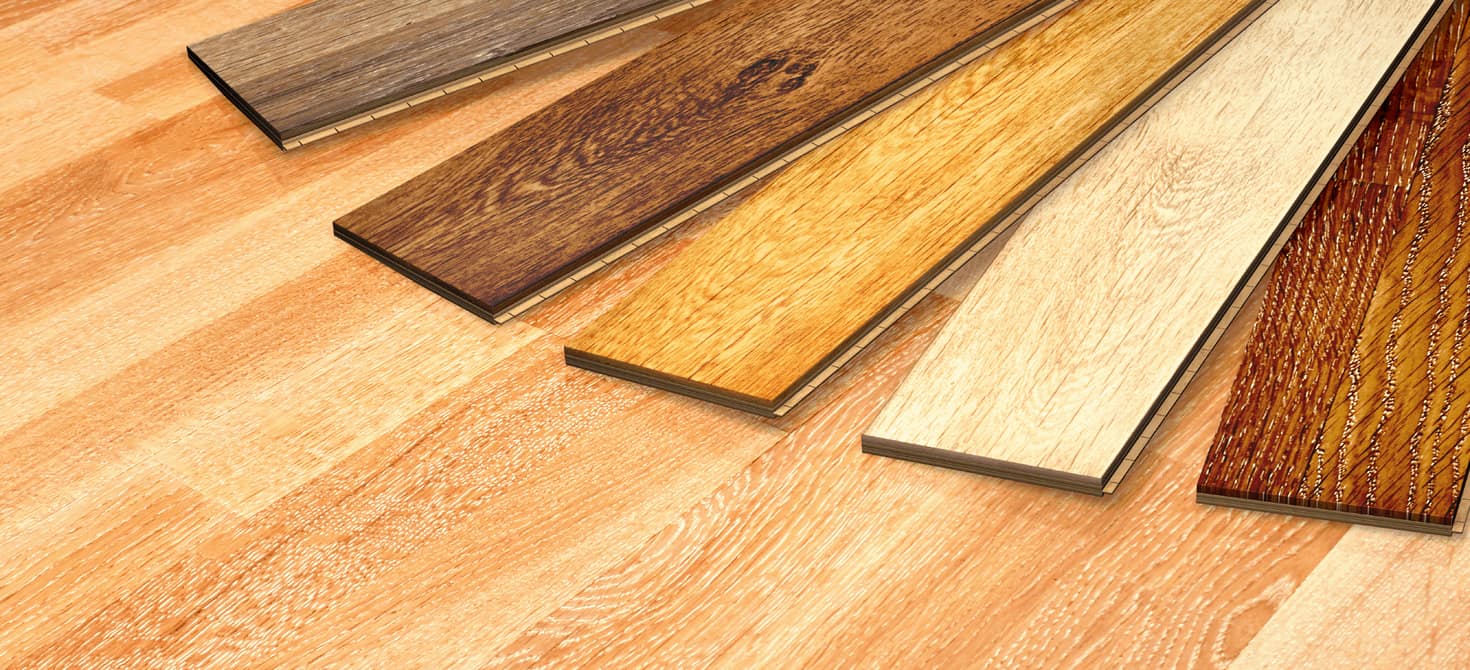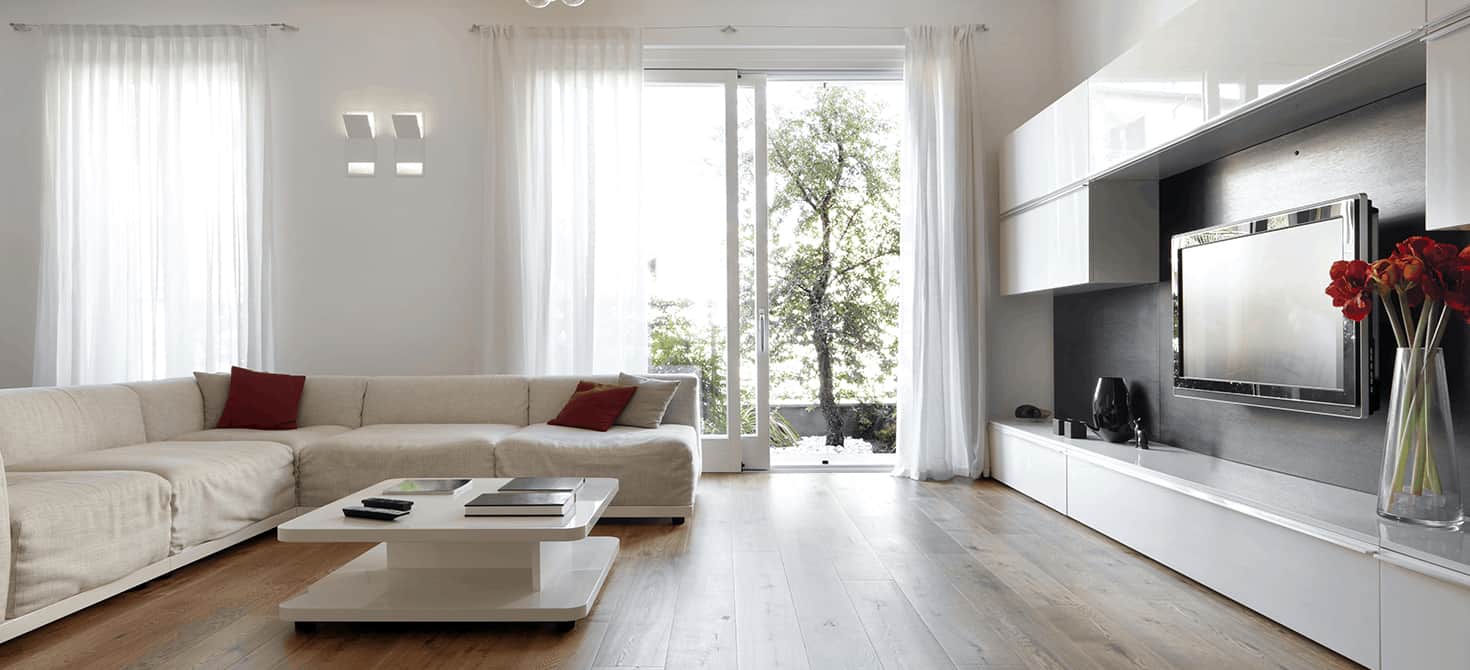- Furnishing tips
- 0 likes
- 3326 views

Parquet or stoneware? This is one of the big questions of those who are preparing to make the floor of their home or work space. In this article we will give you some important advice to help you choose between porcelain stoneware and parquet, identifying the most suitable solution for your specific needs and requirements.
Index
Real or fake parquet?
When choosing a floor we can say that the world is divided between two clear positions: those who love wood and would never do without this material for its warmth and materiality and those who, on the contrary, love the texture of wood but could not bear even a scratch on it. In this case the choice can only fall on porcelain stoneware with parquet effect.
Obviously the choice between porcelain stoneware and parquet depends very much on one's personal taste and family habits. Let's see in the following paragraph the main advantages and disadvantages of porcelain stoneware and parquet.
Parquet and porcelain stoneware: pros and cons
Parquet is a furnishing solution for your floor that expresses all the warmth and harmony of wood. Here are the main advantages and disadvantages of this installation for your floor:
- Parquet has a continuous appearance and when compared to porcelain stoneware there are no joints.
- It is composed of a totally natural material that is extremely soft and warm to the touch.
- It has an intrinsic value that will never go out of fashion
- Can have several finishes: painted, raw or oiled
- Its beauty is also its greatest flaw; it is in fact a living material that changes with the passing of time (it changes its colour, it stains and scratches). Also for this reason parquet is particularly loved.
As an alternative to parquet flooring you can opt for porcelain stoneware. Here are the advantages and disadvantages of this material:
- It is characterised by a sound absorbing capacity
- Maintenance-free
- It is a material that can effectively resist shocks, abrasions, scratches and still flex, weather and fire, stains and chemicals.
- It is a material that does not release any substance, because it is inert.
- The only disadvantage is that in this solution there are joints, even if today they are rectified with a thickness of about 2 millimetres.

Wood-effect parquet or stoneware: not an easy choice
Before making a final choice between parquet or porcelain stoneware, our advice is to ask you some questions that will make you think about how much the choice between these two solutions should not be underestimated.
Parquet, although a refined and elegant choice, is not the right solution for every situation. To make an informed choice, it is first of all important to understand how much attention you pay to your home. In fact, there are people who are particularly anxious to ruin their home floor: in this case, the best solution might be to choose your own wood-effect porcelain stoneware floor.
A home, besides being beautiful, should express maximum comfort and functionality: only in this way you will be able to live well and in total harmony your spaces: it is absolutely unacceptable not to sit on the sofa for fear of ruining its fabric or to walk on tiptoe to avoid scratching the parquet.
When choosing between parquet or wood-effect porcelain stoneware, it is also important to ask yourself what aspect we intend to give our home environments. Only ten years ago it was absolutely unthinkable and inconceivable to create a wood-effect floor in your home. This is because the stoneware was not rectified: the joints reached 4, 5 millimetres and were therefore very evident.
For this reason, having a fake wooden floor with evident joints (and sometimes light-coloured) was a real faux pas for the design of your home: with a floor of this type the house was really too essential and cheap.
Over the years, companies and operators in the sector have specialised considerably in the production and aesthetics of porcelain stoneware, so much so that today there are even better wood-effect products than wood itself. On the market there is also a great choice of colours, finishes, sizes and even knots and styles. Thanks to the vast commercial offer, it is possible to identify the product most in line with the style and design of your home.
Common places on parquet and porcelain stoneware
When choosing between parquet and porcelain stoneware, you should also ask yourself how much you are usually influenced by clichés. It is in fact necessary to dispel some stereotypes or false myths about the two furnishing solutions for your floor.
Today you can find a lot of information and an extremely wide literature on parquet and porcelain stoneware. Obviously there are a lot of clichés and sometimes untrue beliefs: these are mostly approximate opinions, people who have prepared a poor quality parquet or a dated porcelain stoneware in their rooms.
A quality parquet is able to retain its charm even if it is particularly lived-in. A resistant and quality parquet does not create any kind of problem and it is possible to prepare it in your own rooms even if you have a pet (dog or cat). In case you have a pet, our advice is to prefer oak parquet: this quality of wood is in fact particularly suitable because thanks to its hardness it is able to resist in an optimal way to shocks and wear. Oak wood is also able to withstand the action of humidity.
For all those who are wondering if it is better to install a parquet or stoneware floor with underfloor heating, it should be pointed out that even under a parquet floor it is now possible to install a radiant system: simply carry out the right precautions and the relative checks on the screeds, taking all the necessary precautions.
Let's face another myth that circulates on the web: stoneware that does not stain is absolutely false! Over time, many products have developed halos and residues that it is almost impossible to eliminate.
Many people continue to be convinced that it is not possible to install parquet in the bathroom. Here too we have to dispel this myth: parquet can be installed anywhere. It is only important to make sure that there is no water stagnation on its surface for many days.
Another false news that circulates in the net is that modern parquet floors do not require maintenance: absolutely false! This type of surface requires constant maintenance with specific, non-aggressive products and detergents. Depending on the different types of parquet, periodic oiling may be necessary.
Does parquet or stoneware cost more? It is certainly not true that wood-effect stoneware costs less than parquet. The larger the size of the stoneware tiles, the more expensive the product is. However, it should be pointed out that porcelain stoneware will never be able to match the costs of a high quality biocompatible parquet: this type of product can in fact cost 150 Euro per square metre.
It is also absolutely untrue that porcelain stoneware must never be treated; after the end of the building site this product must be cleaned with the aid of special products.

Is there a porcelain stoneware without joints?
There is a type of porcelain stoneware without joints that can be installed on the floor with the aid of expansion joints (every tot. metres), for surfaces with radiant heating systems.
Generally speaking, we can say that even in the case of installation without joints, nothing should happen, but the substrate should still be prepared for installation with products suitable for this purpose, if the product has no joints.
The screed to which the product is glued will in fact move due to thermal expansion and mechanical stress, or even due to static failure. In a carefully designed porcelain stoneware installation project, the movements will vent into the expansion joints or joint, without creating any kind of problem with the floor structure.
